Typhoons & Bleaching events in Taiwan : a two-tailed story
Over the recent decades, extreme events such as typhoons & bleaching events have increased in
intensity & frequency, threatening coral reef ecosystems' survival. In 1998, a strong El Niño event
triggered the first global mass-bleaching event & decimated about 16% of all coral reefs on Earth.
The formation of a strong El-Niño event in 2015-2016 has alerted the scientific community about the
risk of an even more widespread & devastating mass-bleaching event than the one of 1998.
At the planetary scale, the 2015-2016 El-Niño event did lead to the most extensive &
severe mass-bleaching event ever recorded. Globally, scientific reports have estimated that 75% of
the reefs worldwide showed signs of bleaching during this period. Yet, the bleaching intensity was
variable from region to region.
Bleaching in Outlet, KNP (09/2016, 5 m deep)
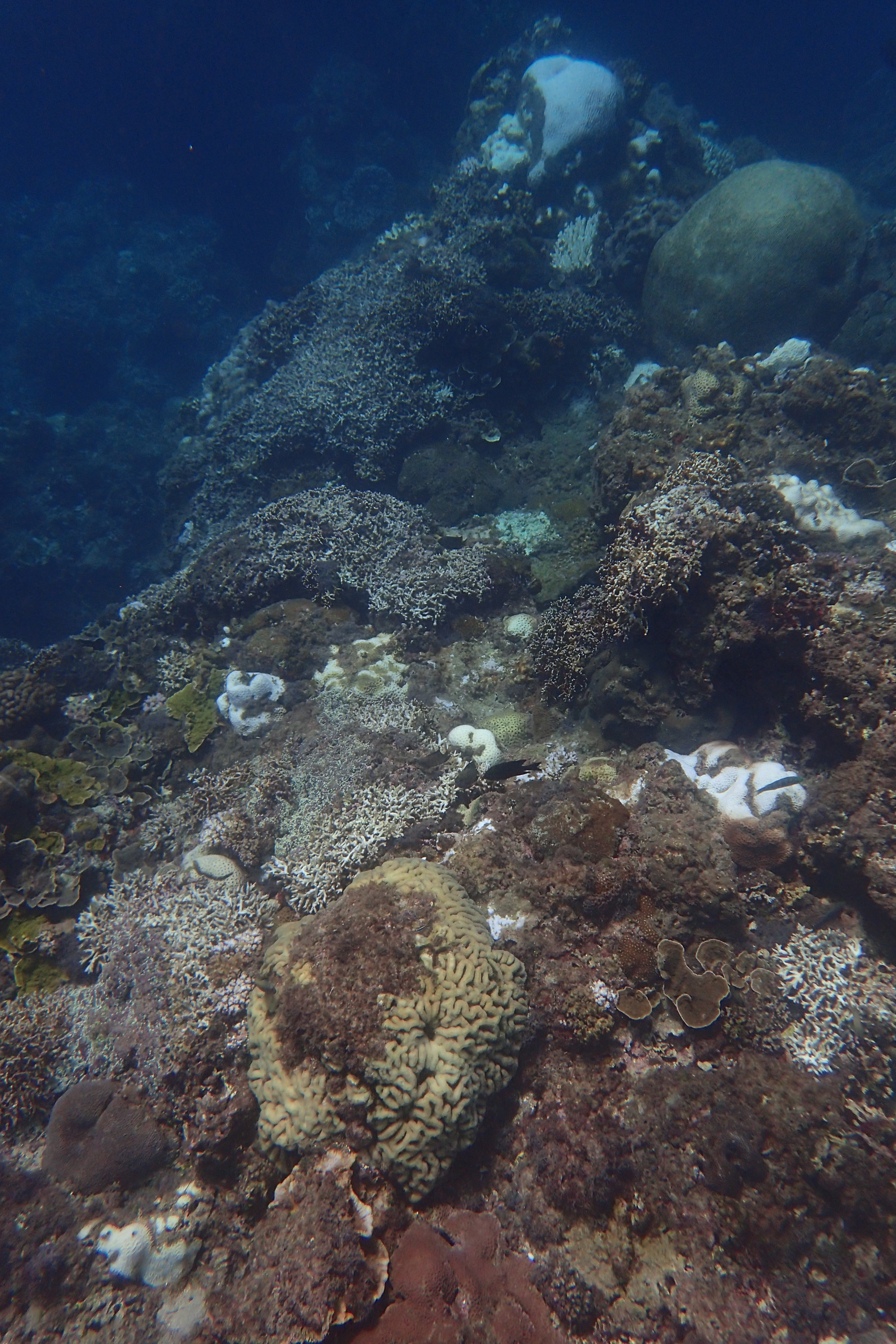 In this context, from 2015 to 2017, I studied the impacts of heat stress & typhoon events on Kenting National Park's (KNP) reefs (Ribas-Deulofeu et al. 2021a).
Between August 2015 & April 2017, seven typhoons hit Taiwan (including two super-typhoons), while
in situ seawater temperature in KNP reached a maximum of 31.2°C, as opposed to an average
maximum SST of 28.8°C (2007-2016). In Taiwan, the successive storms repeatedly lowered the levels
of thermal stress during the 2015–2016 El Niño event.
The maximum Degree Heating Weeklocal (DHW) recorded in KNP only reached 3.1°C weeks
(DHWregion (NOAA) = 9.85°C weeks) before the super-typhoon Meranti hit Kenting in
September 2016 & reduced the heat stress in the region. Additionnal storms & typhoons further helped
cool seawaters & limited the impacts of this El Niño event on KNP's coral assemblages.
Indeed, during the 2016 hot season, only an average of 2.2% of KNP benthic communities have bleached.
In this context, from 2015 to 2017, I studied the impacts of heat stress & typhoon events on Kenting National Park's (KNP) reefs (Ribas-Deulofeu et al. 2021a).
Between August 2015 & April 2017, seven typhoons hit Taiwan (including two super-typhoons), while
in situ seawater temperature in KNP reached a maximum of 31.2°C, as opposed to an average
maximum SST of 28.8°C (2007-2016). In Taiwan, the successive storms repeatedly lowered the levels
of thermal stress during the 2015–2016 El Niño event.
The maximum Degree Heating Weeklocal (DHW) recorded in KNP only reached 3.1°C weeks
(DHWregion (NOAA) = 9.85°C weeks) before the super-typhoon Meranti hit Kenting in
September 2016 & reduced the heat stress in the region. Additionnal storms & typhoons further helped
cool seawaters & limited the impacts of this El Niño event on KNP's coral assemblages.
Indeed, during the 2016 hot season, only an average of 2.2% of KNP benthic communities have bleached.
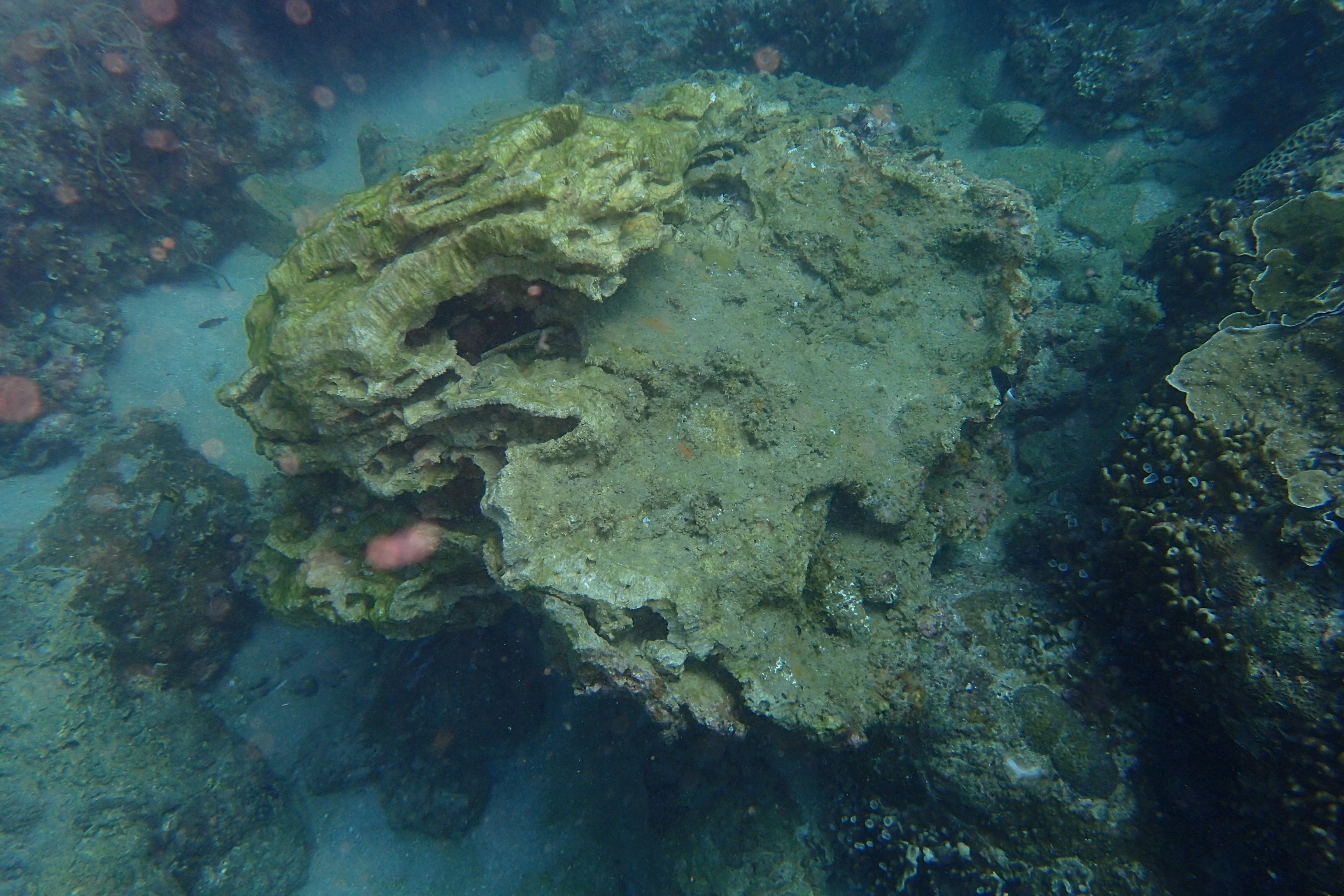
Example of typhoon Meranti breakage in KNP
(09/2016, 5 m deep)
On the other hand, despite the overall coral cover in KNP remaining stable between 2015-2017, local
shifts were observed in the benthic composition, which could be related to mechanical damage caused
by storm disturbances.
In the long-term, the highly active typhoon regime in the region could lead to a shift toward a higher
contribution of mechanical damage-resistant corals in KNP, further decreasing the structural complexity
of its reefs (Ribas-Deulofeu et al. 2021a).
In the last three years (2020-2022), almost no typhoon has directly hit Taiwan which led to important
heat stress anomalies & recent mass-bleaching events, especially in the southern regions of the country.
With the recent local lack of typhoons, Taiwan's coral ecosystems are facing worsening pressures from
global warming as they no longer benefit from repeated heat stress reliefs that were previously provided
by successive typhoons during the hot season.
Reef's structural complexity
Pressure measurements for rugosity assessment (Ribas-Deulofeu et al. 2021b)
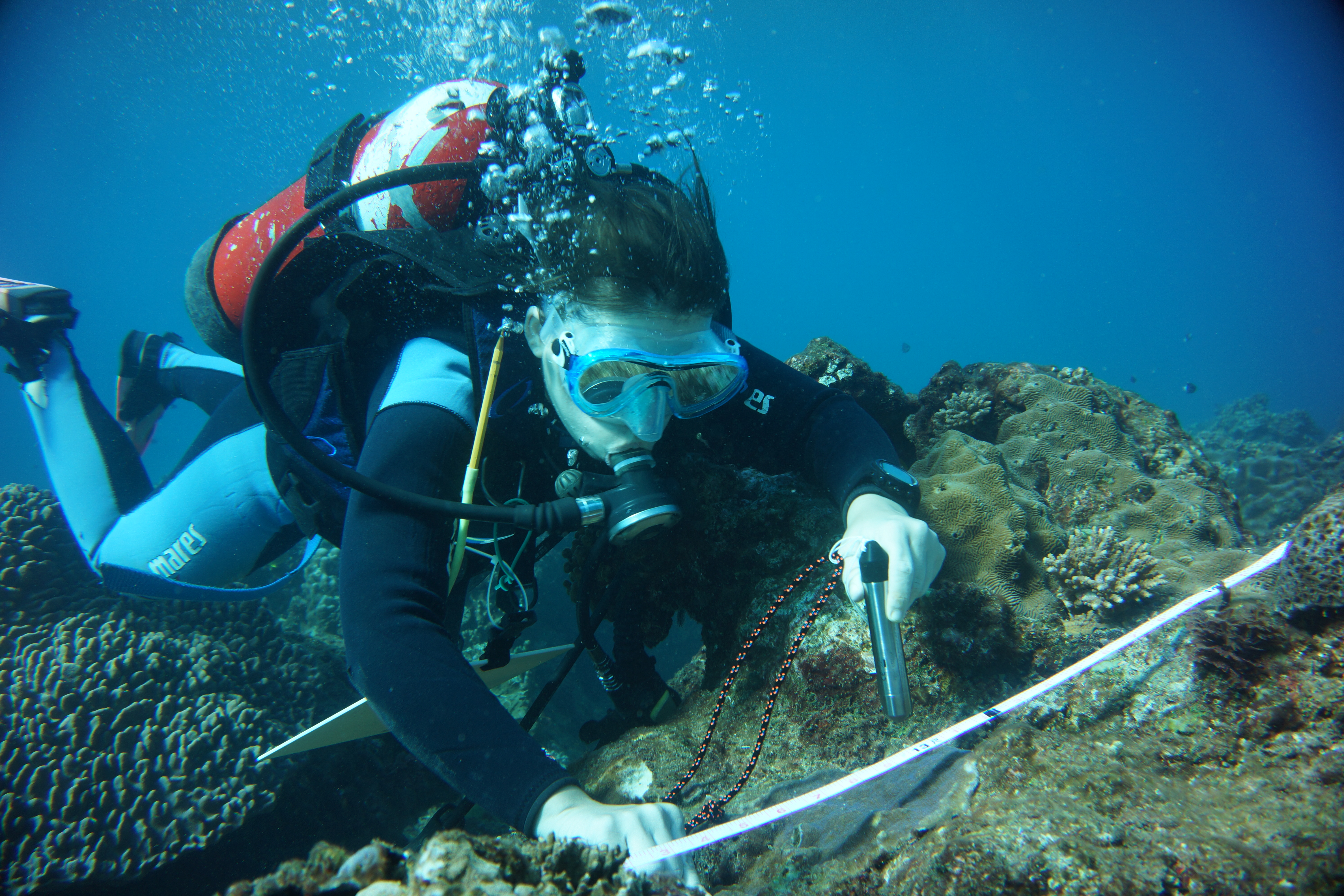 Structural complexity is an important feature to understand reef resilience abilities, through its
role in mediating predator-prey interactions, regulating competition & promoting recruitment.
During my Ph.D. degree, I proposed to adapt the root mean square of the deviation (Rq) from
high-resolution surface profiles with polynomials to quantify the relative contributions of fine & coarse rugosities into the overall rugosity of coral reefs (Ribas-Deulofeu et al. 2021b).
We compared our results with the chain method & the visual rugosity index commonly used to
characterize reef structural complexity.
Structural complexity is an important feature to understand reef resilience abilities, through its
role in mediating predator-prey interactions, regulating competition & promoting recruitment.
During my Ph.D. degree, I proposed to adapt the root mean square of the deviation (Rq) from
high-resolution surface profiles with polynomials to quantify the relative contributions of fine & coarse rugosities into the overall rugosity of coral reefs (Ribas-Deulofeu et al. 2021b).
We compared our results with the chain method & the visual rugosity index commonly used to
characterize reef structural complexity.
Our proposed Rq indices as rugosity estimators successfully accounted for overall rugosity,
fine & coarse scale rugosity, respectively. Which traditional rugosity estimators failed to.
Furthermore, relationships between Rq scores & specific functional groups in the benthic community
were found, highlighting drivers of given rugosity scales in our studied reefs.
Estimating both coarse & fine scale rugosities —& not overall reef rugosity alone— is crucial to better understand the relationship between the structural complexity of reefs & their capacity to resist or recover after specific disturbances. Our indices can be used on any depth profiles, from satellite data to fine-scale 3D models. Our method could also play an important role in reef management by allowing managers to customize their strategies to targeted species or ecosystem functions (Ribas-Deulofeu et al. 2021b).
Photogrammetry plot deployed in Ludao
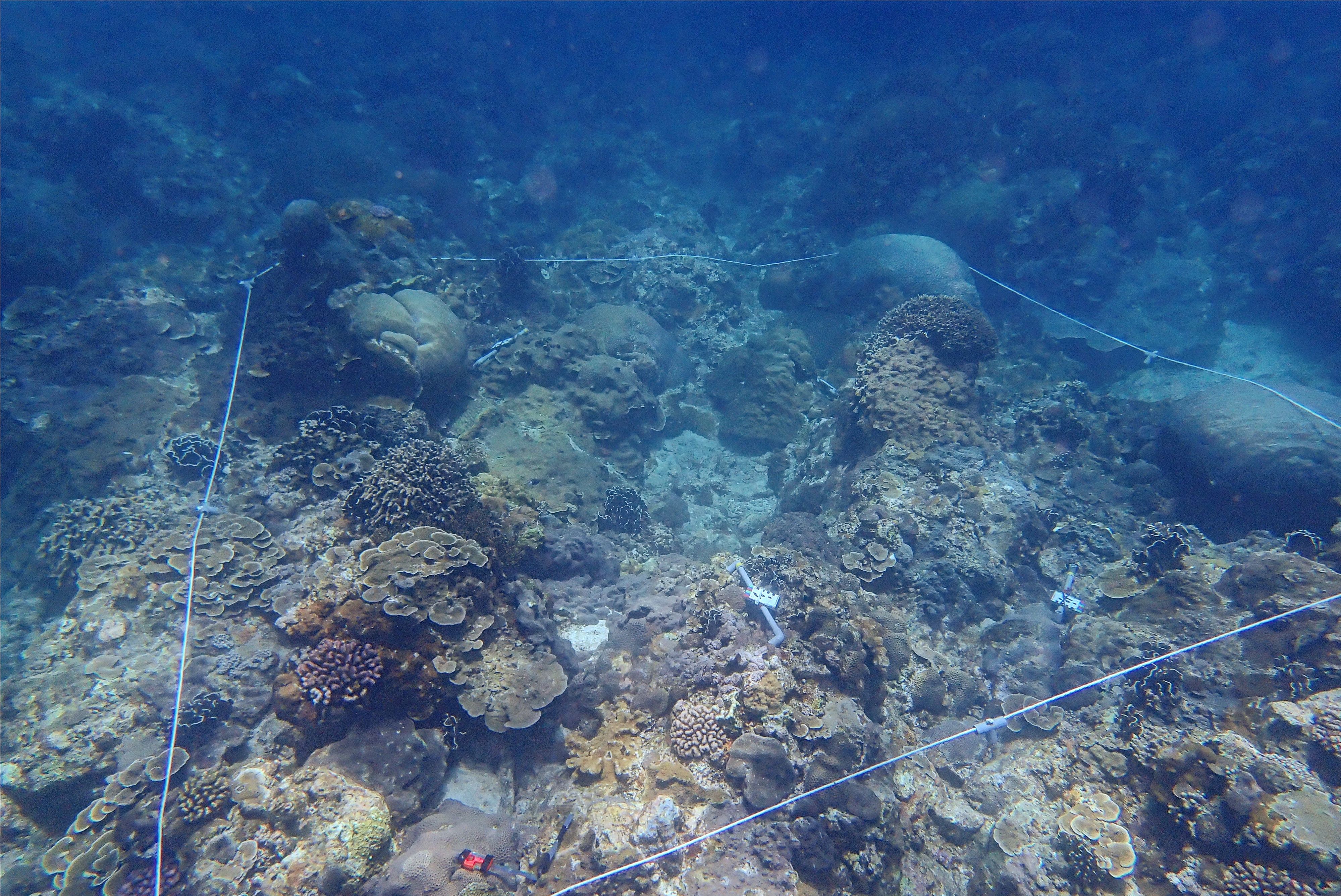
Transitioning from 2D to 3D reef complexity estimations:
Since 2022, I have been involved in field supervision of Master's students (FRElab IONTU, Taiwan)
for the deployment of Structure from Motion (SfM) photogrammetry plots across the latitudinal gradient
of Taiwan. Among our project's objectives, we aim toward the assessment of changes in benthic communities & trajectories of reef-building populations across
the Kuroshio region (Denis et al. 2019).
Our lead master student on this project (Morris Wu) and the photogrammetry team are excited by the coming up results & are looking forward to sharing more about it in the coming months.
Ecosystem modelling: Study case of Kenting National Park (KNP)
With the rapid anthropogenic developments & the decline of coral cover within KNP over the last decades, it became crucial to identify parameters that can enhance its reefs’ resilience & fulfill sustainable development objectives. By combining knowledge on biotic & abiotic components of reef ecosystems with their socio-economical context, System Dynamics (SD) models are offering an adequate approach to decipher the complex processes ensuring reef resilience. In this project, we modelled the KNP reef ecosystems along with its adjacent watersheds. Our model recreated the interactions between 21 functional groups composing KNP reefs as well as the hydrological functioning of the area, covering in total 869.75km2 of land & ocean. Impacts of natural disturbances such as typhoon have also been integrated as well as the interactions between anthropogenic activities & ecological processes. Ultimately, the ecosystem dynamics identified by the model & their relationships with anthropogenic disturbances were used to propose adequate sustainable management strategies to ensure the local persistence of the ecosystem along with its economical values.
MPAs evaluation
Global and local stressors profoundly impact coral-associated ecosystems. Marine Protected Areas (MPAs) were shown to help reduce local drivers of degradation and increase ecosystem resilience capacities. However, long-term conservation efforts need to account for the pervasiveness of climate change. To minimize global challenges’ consequences, the portfolio-based conservation strategy proposed to protect both “good” and “bad” coral communities to preserve the rich biodiversity of these ecosystems alongside their most resistant populations. Taiwan constitutes an ideal study area as its coral-associated ecosystems range from tropical reefs to subtropical coral communities along a gradient of human activities. Additionally, its geographical position could serve as an essential transitional stepping-stone for future coral-associated ecosystems. However, the complexity of MPA governance in Taiwan makes their effectiveness unclear.
For this study, we surveyed 101 locations across all coral regions of Taiwan (excepted Dongsha and Taiping atolls in the South China Sea). We combined traditional underwater surveys with Species Distribution Modelling approach (25 environmental and anthropogenic variables). Our results confirmed differences in the benthic composition among regions, which were characterized bydistinctive morpho-functional groups. Some environmental parameters such as wave energy, light penetration, mimimum seawater temperature and, maximum DHW experienced were essential drivers of the differentiation. Management status did not explained coral-associated ecosystems’ conditions in Taiwan and highlighted the inadequacy of the one-size-fits-all approach to evaluate MPAs effectiveness. Finally, our approach enables the development of a portfolio-based conservation strategy that acknowledges better regional specificities for the sustainable management of coral-associated ecosystems in Taiwan.
Further works are currently ongoing on this topic and we are looking forward to share further on it in the coming months.

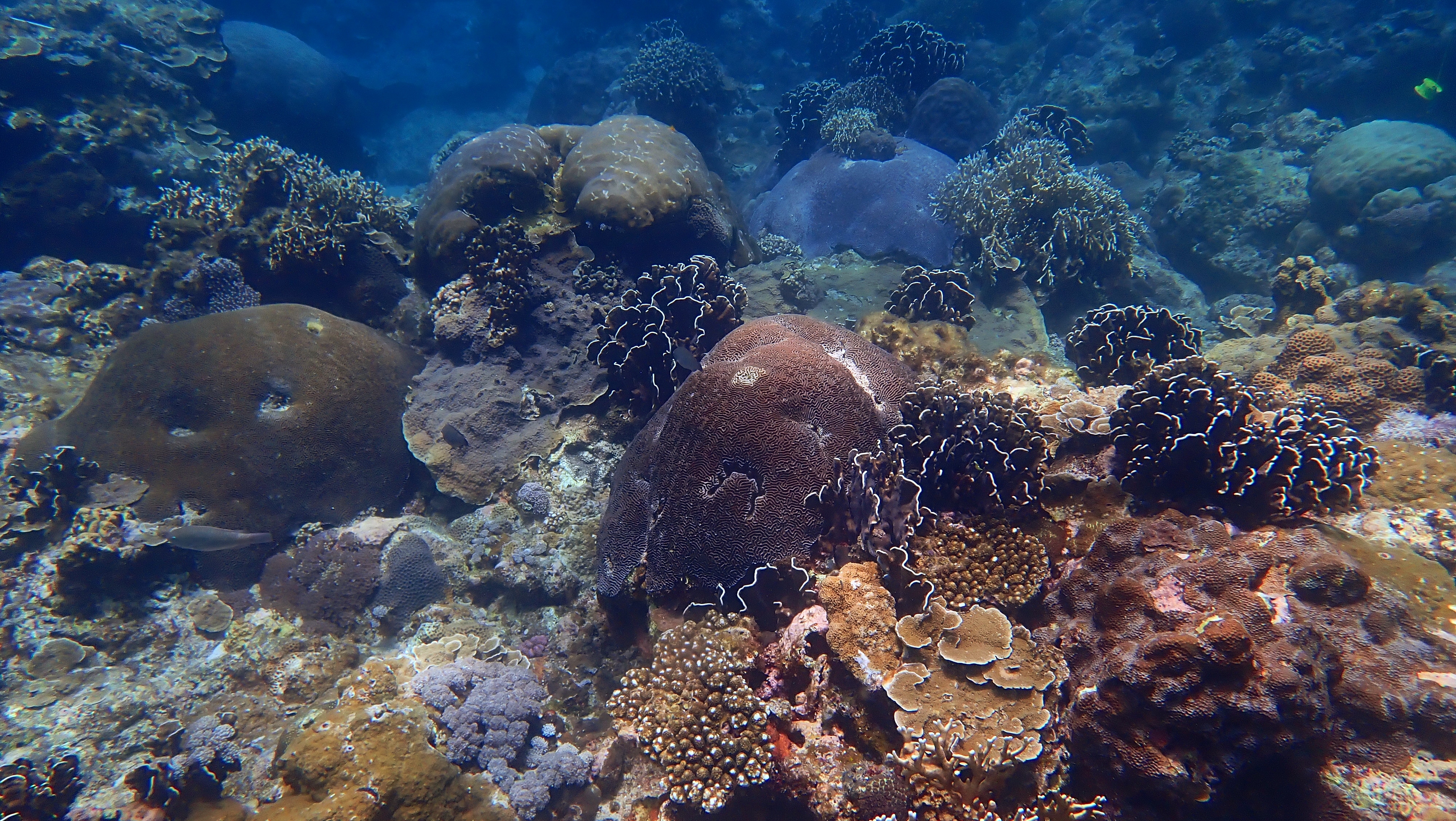
 In this context, from 2015 to 2017, I studied the
In this context, from 2015 to 2017, I studied the 
 Structural complexity is an important feature to understand reef resilience abilities, through its
role in mediating predator-prey interactions, regulating competition & promoting recruitment.
During my Ph.D. degree, I proposed to adapt the root mean square of the deviation (Rq) from
high-resolution surface profiles with polynomials to quantify the
Structural complexity is an important feature to understand reef resilience abilities, through its
role in mediating predator-prey interactions, regulating competition & promoting recruitment.
During my Ph.D. degree, I proposed to adapt the root mean square of the deviation (Rq) from
high-resolution surface profiles with polynomials to quantify the 

